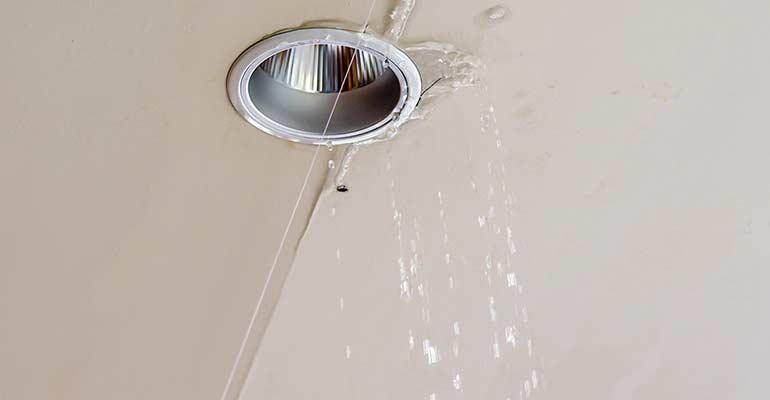Exploring the Top Six Causes of Water Leaks in Residential Spaces
Exploring the Top Six Causes of Water Leaks in Residential Spaces
Blog Article
Almost everyone has their personal conception with regards to Most Common Causes of Leaky Pipes.

Leaks not just trigger waste of water yet can additionally create unneeded damage to your home and promote undesirable organic growth. Unfortunately, water leakages could go undetected considering that the majority of the pipework in our home is hidden. By looking and recognizing for day-to-day circumstances that cause leakages, you can secure your residence from future leakages and unneeded damages. Today, we will take a look at six leak causes that might be creating your pipes to trickle.
Instant temperature level changes.
Severe temperature adjustments in our pipes can trigger them to increase and also contract all of a sudden. This development as well as tightening may trigger splits in the pipes, particularly if the temperature are listed below cold.
Rusty water supply
As time passes by, your plumbing system ages and also rust such as corrosion might start gnawing the pipes. This may be the source of discoloration or bending on your water pipes. This asks for an examination with your plumber quickly. Take into consideration replacing the pipelines considering that they are at a higher risk of corrosion than the more recent models if our plumbing system is old.
Malfunctioning Pipeline Joints
The factor at which your pipelines attach is often the weakest web link in the waterline. Pipeline joints can degrade over time, resulting in water leakages. The majority of pipeline joints are not easily noticeable. If you have loud pipes that make ticking or banging noises, particularly when the hot water is activated, your pipeline joints are possibly under a lot of stress. It is suggested to have your plumber evaluate your system yearly.
Trespassing origins
The majority of water leaks begin outside the home rather than inside it. You could observe wet patches or sinkholes in your lawn, and also that may imply that tree origins are attacking water lines causing water to permeate out.
Poor Water Connectors
At times, a leak can be caused by loosened hose pipes as well as pipes that provide your devices. Usually, moving is what triggers the loose water Connections. You may discover in the case of a washing machine, a tube may spring a leakage because of drinking during the spin cycle. In case of a water connections leak, you may notice water running directly from the supply line or puddles around your home appliances.
Clogged Drains
Obstructed drains pipes could be aggravating as well as inconveniencing, yet they can sometimes wind up creating an overflow resulting in break pipes. Maintain getting rid of any type of materials that may drop your drains pipes that can clog them to prevent such hassles.
All the above are reasons for leaks yet not all water leaks arise from plumbing leakages; some leaks may come from roofing leakages. All leaks need to be fixed promptly to prevent water damages.
Leakages not just trigger waste of water yet can additionally trigger unnecessary damages to your home as well as promote undesirable natural development. By recognizing as well as looking for everyday situations that trigger leakages, you can secure your home from future leaks and unneeded damages. Today, we will look at 6 leakage creates that might be creating your pipes to leak.
At times, a leak can be triggered by loose tubes and pipes that provide your home appliances. In instance of a water connections leakage, you may see water running directly from the supply line or pools around your home appliances.
How To Check For Water Leak In Your Home
How To Check for Leaks
The average household's leaks can account for nearly 10,000 gallons of water wasted every year and ten percent of homes have leaks that waste 90 gallons or more per day. Common types of leaks found in the home are worn toilet flappers, dripping faucets, and other leaking valves. These types of leaks are often easy to fix, requiring only a few tools and hardware that can pay for themselves in water savings. Fixing easily corrected household water leaks can save homeowners about 10 percent on their water bills.
To check for leaks in your home, you first need to determine whether you're wasting water and then identify the source of the leak. Here are some tips for finding leaks:
Take a look at your water usage during a colder month, such as January or February. If a family of four exceeds 12,000 gallons per month, there are serious leaks.
Check your water meter before and after a two-hour period when no water is being used. If the meter changes at all, you probably have a leak.
Identify toilet leaks by placing a drop of food coloring in the toilet tank. If any color shows up in the bowl after 10 minutes, you have a leak. (Be sure to flush immediately after the experiment to avoid staining the tank.)
Examine faucet gaskets and pipe fittings for any water on the outside of the pipe to check for surface leaks.
Undetected water leaks can happen without the home or business owner even realizing. If you suspect a water leak, but not able to find the source. It is time to contact a professional water leak detection service, The Leak Doctor.
How To Find a Water Leak In Your Home
https://www.leakdoctor.com/blog/How-To-Check-For-Water-Leak-In-Your-Home_AE197.html

As a serious reader about How to Find Water Leaks, I imagined sharing that excerpt was smart. Are you aware of another individual who is fascinated about Top Causes of Home Water Leaks? Why not share it. I appreciate reading our article about Common Water Leaks In House.
Book 24/7 Report this page